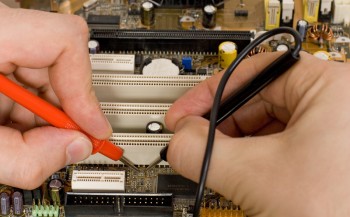When you are purchasing an automobile you take it for a test drive to see if it meets your expectations and performs like it should. When you go clothes shopping you pick your size from the clothing rack but you try it on first to ensure it’s the right fit. When you purchase a bottle of wine in a restaurant the waiter gives you a taste to verify that the wine hasn’t soured before you accept the bottle for your table. When you hire a landscaper to clean your yard you verify that the work was completed before you pay them. Everyday life is a constant series of tests to make sure that the things we buy, use, or do meet our expectations. In the automotive world test engineers are required to verify that every part that is designed and produced meets all specifications and performs as expected. Automotive test engineers are the gatekeepers for what products go into production; if the product does not meet their requirements then they send it back to the design engineer for more development.
Life as a test engineer in the automotive world
Test engineers work with all areas of engineers up and down the product development process. The work with the design engineers in the initial development phases testing early prototypes to see if new designs will be capable and perform as needed. As the product gets ready for launch test engineers will work with the designers again to see if their product will meet all of the stringent requirements required to be released. Test engineers will work with the process line engineers to see if the parts they produce perform as expected from the smallest components to the full vehicle assembly. Finally, test engineers partner with quality engineers to analyze the results to ensure that meet the quality levels required.
Below are two real-world examples of a typical test engineering projects:
Example 1 – Circuit board stress testing for solder joint reliability
Circuit boards are the ‘brains’ behind numerous components with the automobile and they are subjective to a variety of stresses once they get to the customer. There are vibrational stresses, thermal stresses, lifetime stresses and impact or shock; the circuit board and all its solder joint mounted components must be strong enough to survive all of these stresses and operate reliably throughout an estimated lifetime. To validate the circuit the test engineer will conduct a series of tests. Vibration testing is conducted by attaching the circuit board to a vibration table and then applying vibration along different axis for a set duration of time; the circuit board must be operational at the completion of the test. When testing is complete there will also be cross sections done of key stress points on the circuit board to verify the integrity of the solder joints and components. Similar test is done for shock but instead the board is dropped from a specified height and must survive the drop with no loss in functionality.  Thermal and lifetime stresses are meant to simulate what the circuit board will see when it gets to the customer and since we cannot test in real time (since that would require many years in the field) the test engineer will perform accelerated life testing that exposes the circuit board to temperatures ranging from -40 degrees Celsius to 85 degrees Celsius with a very quick ramp from cold to hot and then back again. This quick change in temperature stresses the circuit board and if there is a weak point in the design or production of the part and allow it to be identified and corrected. After thermal cycling testing is complete the test engineer will verify that the circuit board is functional and do cross sectional analysis to verify solder joint integrity.
Thermal and lifetime stresses are meant to simulate what the circuit board will see when it gets to the customer and since we cannot test in real time (since that would require many years in the field) the test engineer will perform accelerated life testing that exposes the circuit board to temperatures ranging from -40 degrees Celsius to 85 degrees Celsius with a very quick ramp from cold to hot and then back again. This quick change in temperature stresses the circuit board and if there is a weak point in the design or production of the part and allow it to be identified and corrected. After thermal cycling testing is complete the test engineer will verify that the circuit board is functional and do cross sectional analysis to verify solder joint integrity.
Example 2 – Anti-lock brake testing in vehicle
Automotive test engineers also work with full car testing such as verifying the performance of anti-lock braking systems. This testing is performed on large test tracks that are designed to emulate potential driving conditions the car could have to perform in. For example, a portion of a test track is flooded with water and the car will enter the water and must stop safely. During the testing the test engineer will monitor the activity of the anti-lock braking system components via a computer and record the event for analysis afterwards to validate the performance. Additionally, the test will be recorded to validate the performance of the unit.
Education requirements for test engineers
The basic requirements for a test engineering job are a Bachelor’s Degree in an appropriate engineering field; electrical engineering for circuit boards, electrical systems, etc., mechanical engineering for hardware, mechanical systems, etc. (Note – A Master’s degree is not required but will help in getting a position in a highly specialized field.) In addition to an engineering degree test engineers will want to be experienced with programming since you will be interacting with a variety of different testing equipment and be familiar with data acquisition and analysis. Experience with failure analysis is a large portion of the test engineer’s job so that you can provide accurate and helpful test results and analysis to the automotive engineering team. Finally, the test engineer needs to be familiar with a variety of hardware and tools to be able to troubleshoot test equipment failures.


Comments 1
I am Diploma Automobile with 18 years of experience in repairs, Am I eligible for test engineer , after completing any course of test engineer